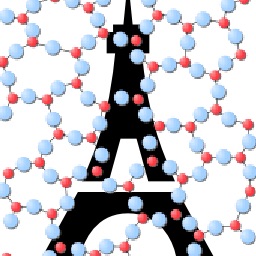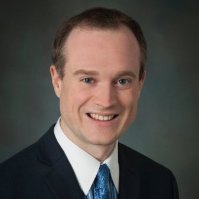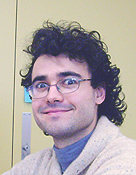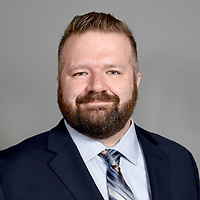Research interests
-
Although they might be “invisible” at the macroscale, atoms always control the properties of materials. In contrast to crystals, disordered materials like glasses can be made of virtually any composition, since (i) they do not have to satisfy any given compositional stoichiometry and (ii) any element (or combination thereof) of the periodic table can be turned into a glass, if cooled fast enough from the liquid state. The range of possible compositions accessible to glasses remains largely unexplored so that there is still a tremendous room for improving their engineering properties (mechanical resistance, durability, optical properties, etc.) and developing new formulations with novel functionalities. Although the virtually infinite number of compositions glasses can be made of opens limitless possibilities, it also comes with great challenges. Indeed, traditional Edisonian “trial-and-error” approaches are largely inefficient to pinpoint promising compositions within such a large compositional space. As an alternative route, accurate composition–structure–property models can enable the targetted discovery of novel materials with unusual properties.
To address this problem, the PARISlab uses multiscale simulations and modeling techniques (e.g., topological constraint theory) to reveal the fundamental physics governing the macroscopic behavior of materials. This allows us to identify and tune the essential atomic features of materials, towards the development of robust predictive models.
-
Can one take advantage of the incredible amount of data the world is generating every day to solve materials engineering problems? Although Big Data and machine learning approaches are now commonly used in computer science (e.g., for face recognition algorithms), their potential to reveal important patterns in the structure of materials, predict the properties of materials, or accelerate materials’ modeling remain largely unexplored.
The PARISlab works toward applying machine learning to reveal the atomic genome of glasses and accelerate the discovery of new phases with unusual properties.
-
A common goal of many industries is to develop innovative materials enabling new advanced applications. Following the lead of the pharmaceutical industry, which already largely uses simulations to create new drug formulations, materials science and engineering companies are also seeing the benefits of using simulations rather than systematic costly experiments to design new materials. However, although the available computing power has increased exponentially over the past several decades, atomistic simulations are traditionally limited to small systems (millions of atoms) and short timescales (nanoseconds).
Fortunately, topological constraint theory—or rigidity theory—provides an alternative path forward. It focuses on the important nanoscale physics governing materials’ properties while filtering out less relevant details that, ultimately, do not affect their macroscopic properties. Topological constraints theory has been successful in predicting the compositional dependence of glass properties and has been used as a tool to enable the quantitative design of new glass compositions. Importantly, Corning Gorilla© Glass—a damage- and scratch-resistant glass used on more than 5
billions smartphones and tablets—was designed in silico by topological constraint theory.Introduced by Phillips and Thorpe in the 80s, topological constraint theory applies concepts from the study of the stability of mechanical trusses to molecular systems—by reducing them to a network of nodes (the atoms), connected via some constraints (the chemical interactions acting between the atoms). In this framework, a molecular network can be flexible, stressed–rigid, or isostatic if the number of constraints is lower, higher, or equal to the number of degrees of freedom of the atoms, respectively. Recently, it has been found that optimally-constrained isostatic systems are obtained inside a window of compositions defining an intermediate phase. Interestingly, materials belonging to the intermediate phase tend to self-organize to become rigid while avoiding internal stress and show unusual properties, namely, a space-filling tendency, optimal mechanical properties (maximum fracture toughness), and weak aging phenomena (low propensity for creep of relaxation).
The PARISlab is working toward extending the use of topological constraint theory to new classes of materials (e.g., cementitious materials), new scales (e.g., including the influence of the microstructure of materials), and new properties (e.g., surface reactivity and dissolution). We also investigate the origin of the unique properties of isostatic atomic networks.
-
Brittleness remains the primary limitation of glasses. However, glass does not have to be brittle! In fact, modern internet primarily relies on optical fibers, which are made of bendable glasses. Novel high performance and touch-sensitive glasses like Corning® Gorilla® Glass have changed the way we interact with screens, but the development of thinner protective screens requires the discovery of tougher, harder, and lighter glasses. Although they are usually brittle at the macroscale, we recently discovered that glasses can show some metal-like ductility at the nanoscale. Tuning and optimizing such nanoductility opens a new opportunity to develop virtually unbreakable glasses.
By means of atomistic modeling and experiments, we aim to understand the atomic origin of the mechanical properties of disordered materials, including stiffness, hardness, and fracture toughness. Based on this knowledge, we develop physically-sound predictive models to accelerate the discovery of new glass formulations with enhanced mechanical properties.
-
When subjected to radiations, atomic networks tend to undergo the formation of structural defects, which can ultimately lead to the amorphization of the material. In turn, the accumulation of defects can alter the macroscopic properties of a material (e.g., mechanical properties or reactivity). As such, it is critical to understand, control, and predict the propensity for irradiation-induced damage in materials.
The PARISlab has developed new atomistic simulation methodologies to model and predict the long-term damage undergone by materials subjected to radiations. Applications include the degradation of aggregates in nuclear plants’ concrete and nuclear waste immobilization glasses.
-
In contact with water, materials can react through hydration, hydrolysis, or ion-exchange, which can ultimately lead to the dissolution of the material. Although reactivity is sometimes beneficial (e.g., for bioactive glasses), it often limits the performances of materials over time (e.g., alkali-silica reaction in concrete or dissolution of nuclear waste immobilization glasses). Hence, there is a strong interest in understanding, predicting, and stimulating/mitigating the reactivity of materials.
To tackle this problem, the PARISlab relies on novel reactive molecular dynamics simulations, which allow us to model the chemical interaction between a material and a solvent. We also work towards the development of predictive models linking the topology of materials’ surface and bulk atomic structure to their reactivity and dissolution kinetics.
-
As out-of-equilibrium materials, glasses or cementitious materials tend to “age” or “relax”, that is, their properties tend to change over time. For glasses, this can result in pixel misalignments in large OLED TV screens, whereas, for concrete, aging can manifest through long-term creep, i.e., delayed deformations under constant load. Aging can also affect chalcogenide phase-change materials (used to store data), wherein resistance can drift over time. Recently, we found that atomic networks showing an optimal topology, i.e., which are rigid but free of eigenstress, tend to feature a minimum propensity for aging over time.
The PARISlab uses accelerated simulation techniques and topological constraint theory to model and predict the long-term relaxation of out-of-equilibrium materials and understand topology-aging relationships.





